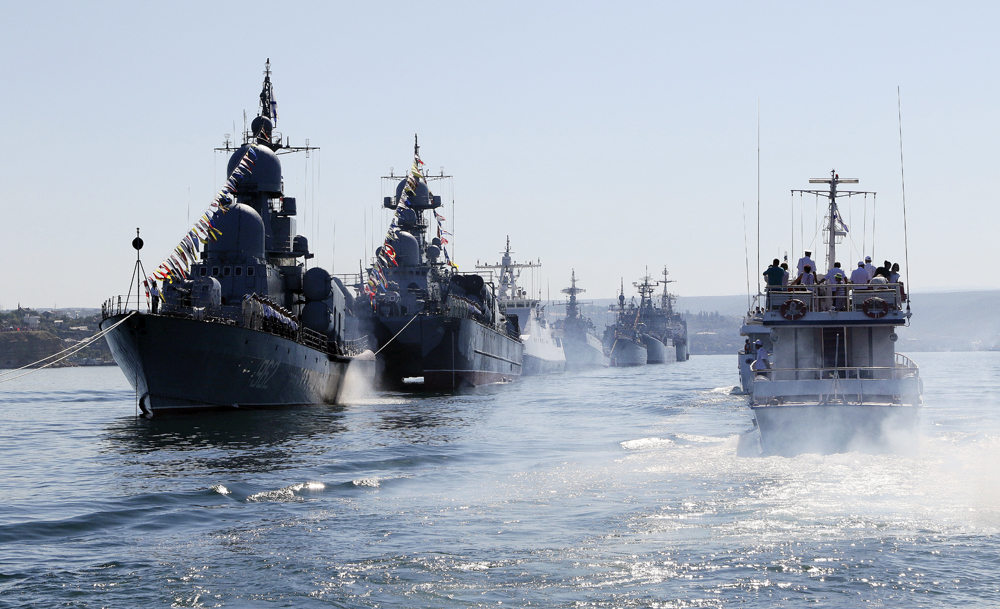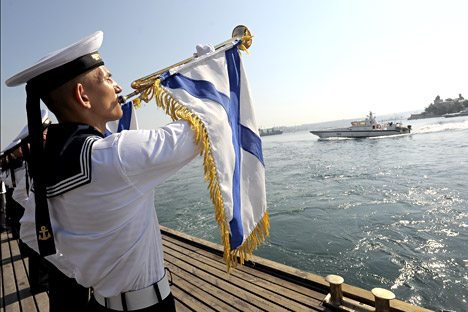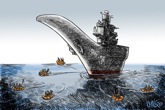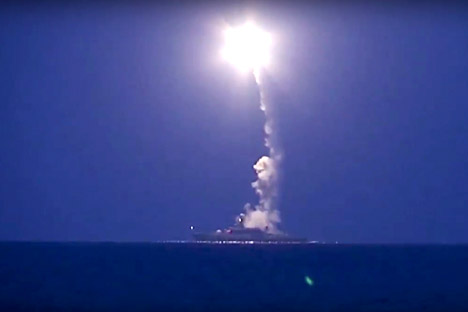Renewing infrastructure for the Russian Navy

Russian warships are seen during a rehearsal for the Navy Day parade in Sevastopol, Crimea.
ReutersThe drastic reduction of military spending in Russia during the 1990s led primarily to the decay of technical maintenance points. Naval vessels were rarely used until 2000, hence breakdowns rarely occurred. The naval fleet's activity beyond Russian waters was practically non-existent.
As the Russian Navy renewed its activities in the middle of the 2000s, navigation in remote seas and oceanic zones increased. So did the breakages.
A significant number of Russian military ships quickly broke down and it was impossible to repair them because the repair bases had fallen into disrepair. There were frequent cases of ships being sent for repair and not returning, or of seaworthy ships being dismembered as organ donors for their more fortunate brethren.
It was then that Russia decided to restore the ship repair and maintenance system in the ports from scratch.
How the fleet's problems were solved
A state-owned company called Novik was established in 2008 with this precise objective. In 2009, Russia began constructing a technical base for the North Fleet, which was then the most active. Bases for the Pacific Ocean and Baltic Fleets followed thereafter. These were set up in Vladivostok and Vilyuchinsk on the Pacific and in Kaliningrad on the Baltic Sea.
Russia began searching, in 2013, for solutions for the Black Sea Fleet, which was the most problematic at the time. During this period the "Syrian Express" was gathering momentum, with landing craft from all four Russian fleets.
The growing intensity of the campaigns required more thorough maintenance. The Novik representative office that opened in Ukraine in 2013 transformed into a Black Sea industrial-technical base. It was immediately given the responsibility of repairing and maintaining the ships entering Sevastopol from all the Russian fleets that had missions in the Mediterranean.
Specifics of the new industry
The key feature of the new defence repair and maintenance bases is their mobility.
"We are not tied to factory capacities. We can send the working group out to the ship. There it can solve many of the problems that, in theory, can occur during repairs and maintaining readiness of the ship at the base," said Alexei Lyaschenko, Novik's general director.
The technology of the new repair bases consists of mobile groups containing 20- to 40-feet-high equipped sea containers that are assembled in the ports depending on the requirement. This technology can service the fleet technically not only in port but also out at sea.
Repair and service is also carried out during combat missions, so that time is not lost while returning the damaged ships to port. Everything is repaired on the spot with the base's capacities. Almost all auxiliary navy units are suited to this, as are vessels from the commercial fleet.
Helpful experience
Such an approach resembles in many ways methods applied by the British Royal Navy during the Falklands War. The Royal Fleet Auxiliary provided mobile bases, maintenance and emergency repair of combat ships, fixing their technical breakdowns and combat damage several thousand miles from the closest port. Mobile bases in auxiliary vessels were also found in Japan's imperial fleet during WWII.
The Soviet Navy used this method during combat missions in the Mediterranean Sea. Modern industrial equipment and the module principle facilitate repair and maintenance, greatly increasing the number of solutions. Other players are also manifesting interest in this technology.
India, in particular, is currently building these bases in the Indian Ocean.
First published in Russian in Lenta.ru.
All rights reserved by Rossiyskaya Gazeta.
Subscribe
to our newsletter!
Get the week's best stories straight to your inbox


